The full-scale Russia’s invasion caused unprecedented migration of Ukrainians, fleeing from active warfare events in the Northern, Eastern, and Southern Ukraine. Unlike the more ‘local’ Russo-Ukrainian war that started in 2014, which caused predominantly internal displacement of citizens, the full-scale invasion on 24 February 2014 resulted in more extensive migration abroad, first and foremost – to the EU countries. In our Internet era, this massive influx of asylum-seekers, refugees and other externally displaced persons (the exact status of such Ukrainian citizens varies from country to country) could not go unnoticed online.
Matti Moisala carried out and defended his MSc study “Mobility of Ukrainians to Europe in 2022 and the effect of social connectedness on destination choice” in our Digital Geography Lab. Matti’s work contributed to the BORDERSPACE project and was supervised by Olle Järv, Oleksandr Karasov, and Tuuli Toivonen. The hypothesis of the study was that the destination choice of Ukrainians depends on their previous social network in the European states, indicated by the Facebook social connectedness index and that Twitter data reflects the actual distribution of Ukrainians among countries.
The social connectedness index describes the relative probability of Facebook friendship links between different geographical areas. While intentionally unavailable for some temporarily occupied regions of Ukraine or connections between Ukraine and Russia, the social connectedness index provides a promising proxy of the strength of social relationships among communities worldwide. According to Figure 1, pre-invasion social connectedness was the strongest with Poland, Czech Republic, Slovakia and Hungary, and three Baltic states: Estonia, Latvia, and Lithuania. Ukraine is least socially connected with the UK, France, the Netherlands, Iceland, Norway, Romania, and Turkey.
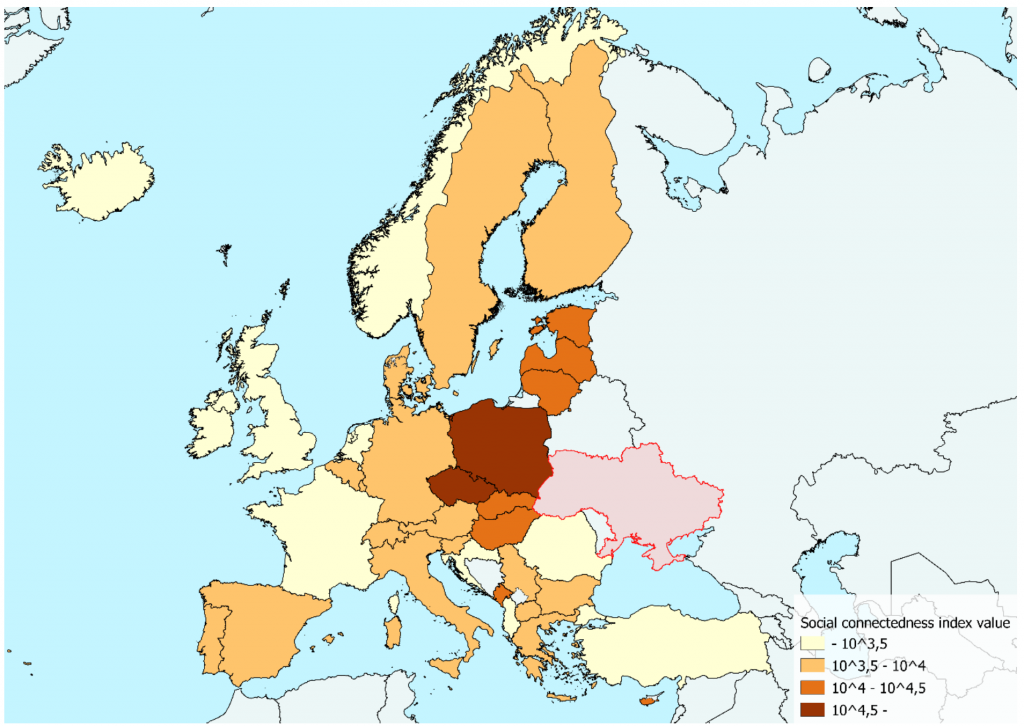
Relationships between the social connectedness and the proportional number of Ukrainian externally displaced persons are month-dependent: we observed a steady increase in the respective correlation over the first months of the full-scale invasion (Figure 2). However, in September, these relationships rapidly weakened; in November, they became negligible. Unfortunately, our analysis did not extend beyond the first months of the full-scale invasion; therefore, we did not explore the complete picture of migration; this autumn depression might be explained by the relocation of Ukrainians to other countries of their choice and returning to Ukraine when the front line has been stabilised in Ukraine – especially after the liberation of the Kharkiv region in September and Kherson city in November. We found that Poland and Baltic states received the highest share of Ukrainian displaced persons having at the same time high social connectedness, whilst France demonstrated consistently low social connectedness and number of hosted Ukrainian citizens. Greece, Hungary, and Italy are the countries of relatively high social connectedness, which hosted somewhat fewer displaced persons.
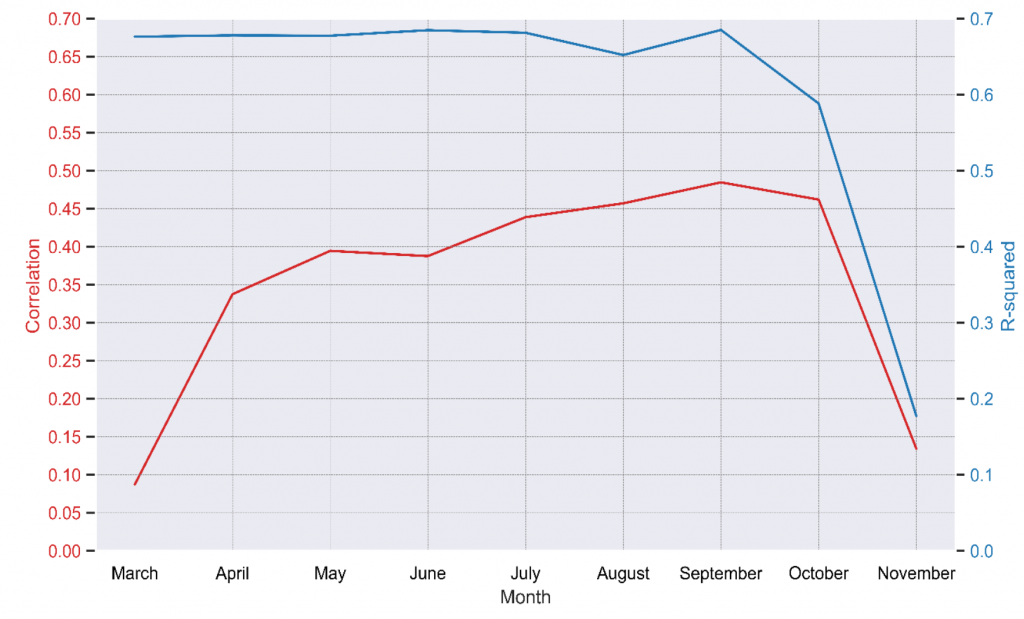
Twitter data revealed that the number of Ukrainian Twitter users increased the most in Ireland, Norway, Belgium, Kosovo, and Poland relative to pre-invasion numbers. We observed a strong correlation between tweeting in the European countries and the number of Ukrainian displaced persons in May and October 2022 (Spearman correlation of ~0,63-0,73), while overall, this relationship is not stable over the months. We found a weak to moderate positive correlation between the social connectedness index and unique Twitter users (Figure 3), suggesting that Twitter data relatively well represents social relationships among the countries.
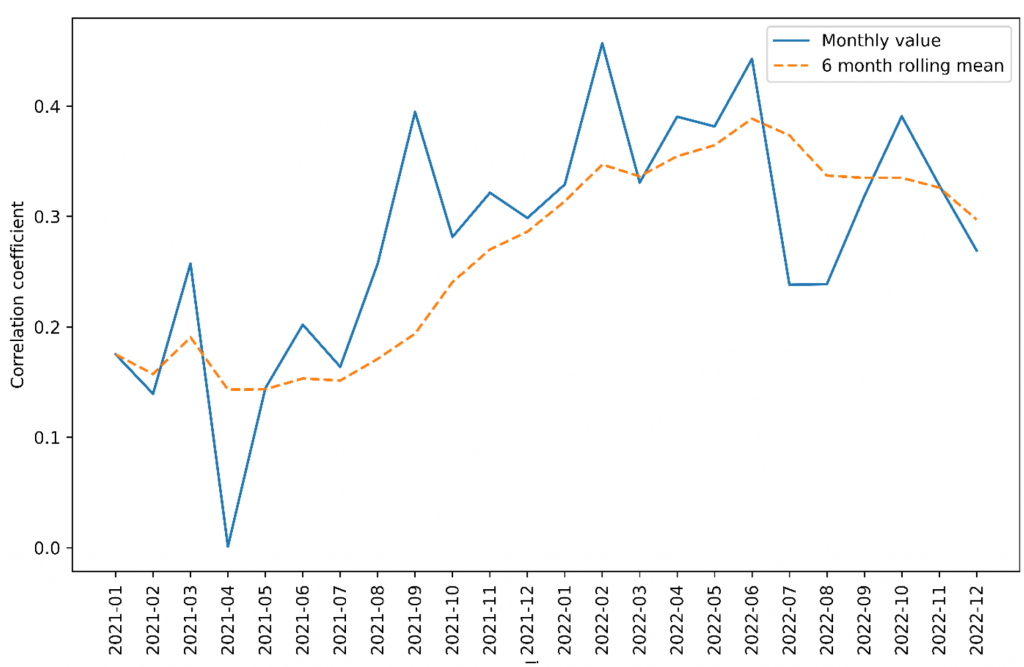
Unsurprisingly, the full-scale invasion negatively influenced the number of active Twitter users in Ukrainian regions. Figure 4 demonstrates the absolute decrease in the number of unique Twitter users posting from five major administrative units of Ukraine: Kyiv City, Dnipro, Kharkiv, Lviv, and Odesa. Notably, some decrease was observed since January 2022, suggesting that alarming news spread in media at that time resulted in the pre-cautious behaviour of some Twitter users. The period between the end of February 2022 and April 2022 is, no doubt, the most challenging time in the modern history of Ukraine.
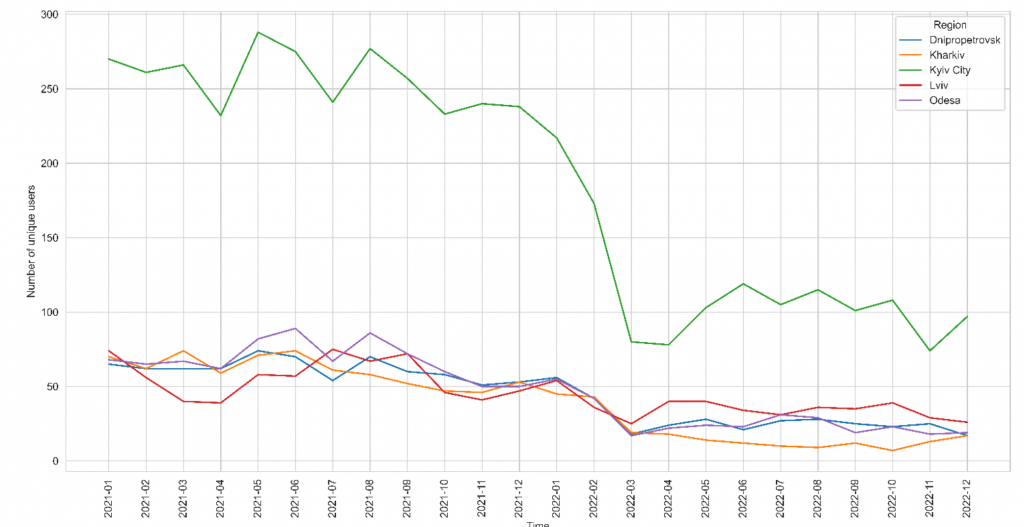
We analysed the language of tweets posted by forced Ukrainian migrants. We found a notable decrease in the number of tweets in Russian with respective growth of popularity of Ukrainian with some positive tendency in English as well (Figure 5). The outbreak of war is seen in February 2022; a peak of tweeting in Ukrainian was also observed for late autumn in 2021 – at the time, the Main Directorate of Intelligence of the Ministry of Defense of Ukraine, as well as some Western governments and media warned about the potential invasion. The use of Ukrainian in public is one of the dimensions of the ‘rally around the flag’ – societal mobilisation in the face of the threats.
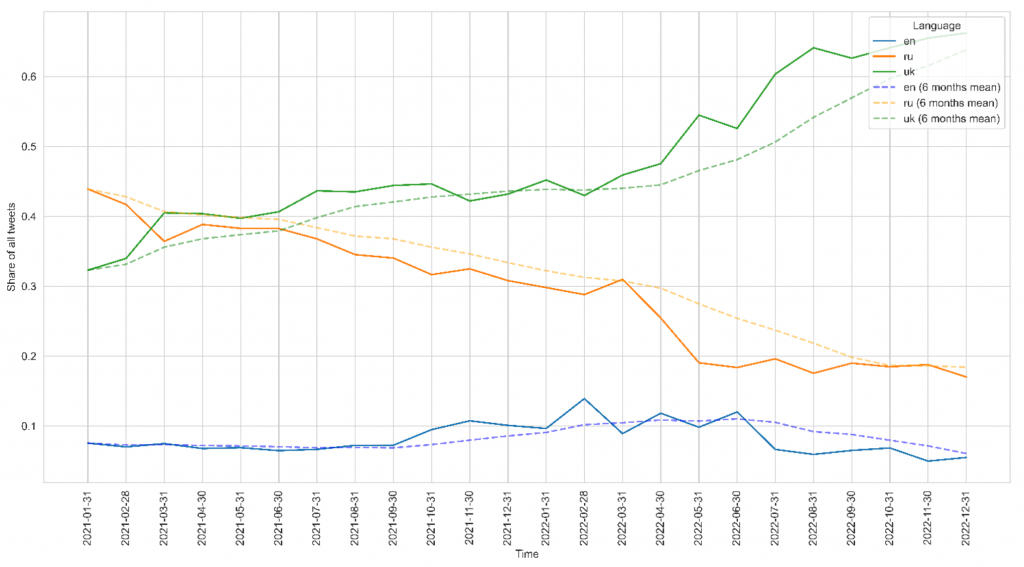
Matti’s results, while preliminary, shed light on intangible dimensions of forced mobility of Ukrainian residents and, overall, the response of Ukrainian society to the challenge of unjustified Russian aggression. We observed moderately positive relationships between a number of wartime migrants from Ukraine who are social media users and official statistics, providing evidence of relatively good representativeness of social media data for analysis of such mobility. A big data-driven product — social connectedness via Facebook — is a good predictor of destination choice; however, the relationships are month-specific. Content analysis of tweets suggests that Ukrainians do reveal their unity as citizens of a political nation; further work might concern their new life abroad, spatial preferences and integration in foreign communities.
Read Matti Moisala’s MSc thesis from Helda: HERE.
– – – – –
The BORDERSPACE project focuses on studying cross-border mobilities and interactions, transnational people, and functional transnational spaces. The novelty of the project stems from the use of novel big data sources to provide valuable insights for cross-border research and practice. The project is carried out at the Digital Geography Lab — an interdisciplinary research team focusing on spatial Big Data analytics for fair and sustainable societies at the University of Helsinki.
